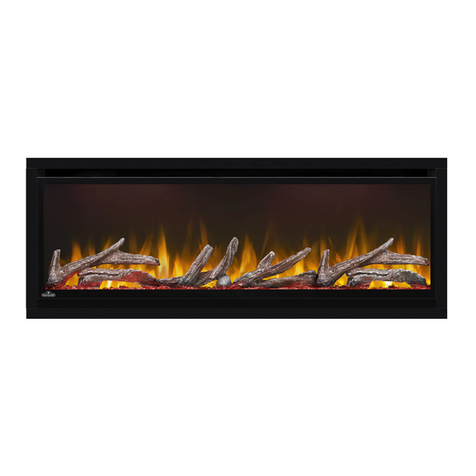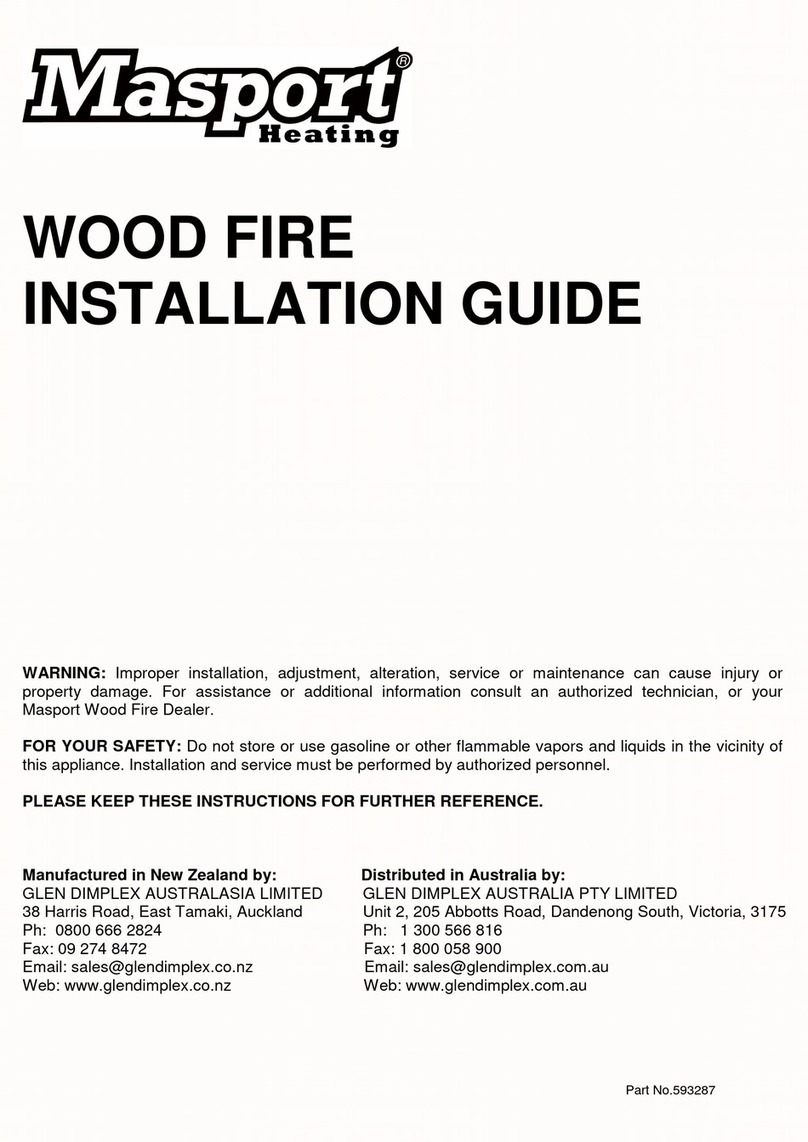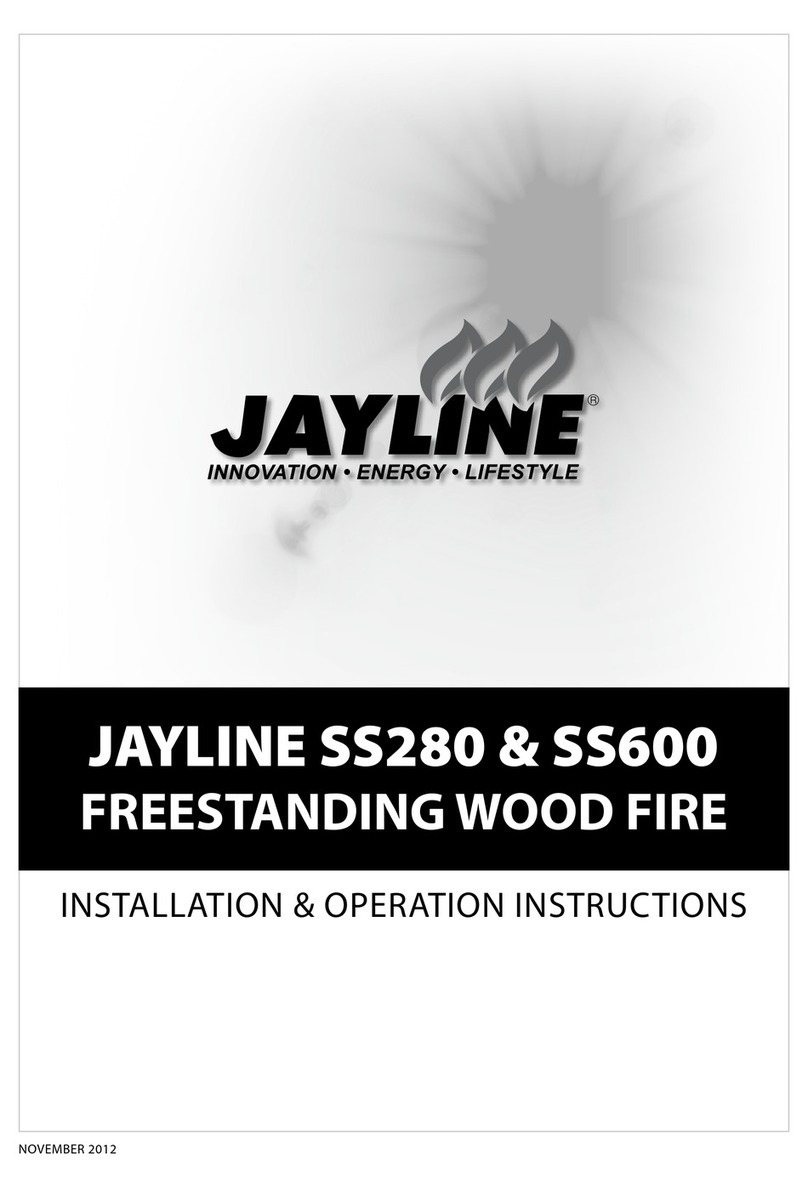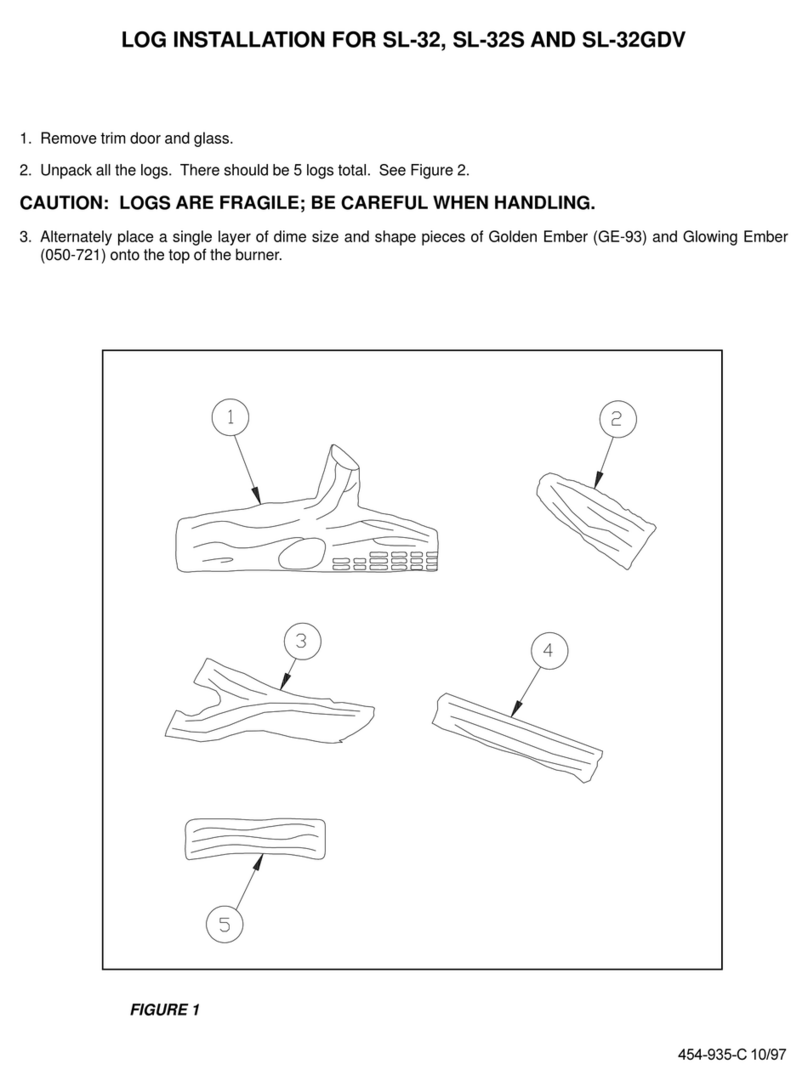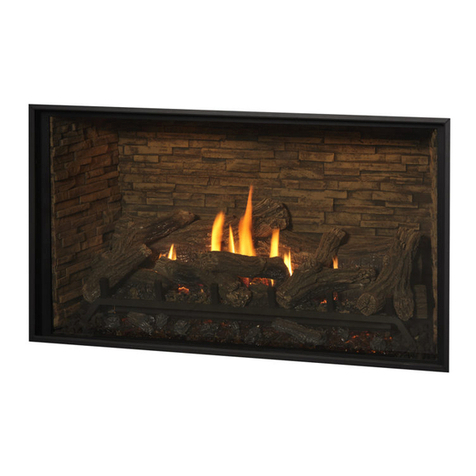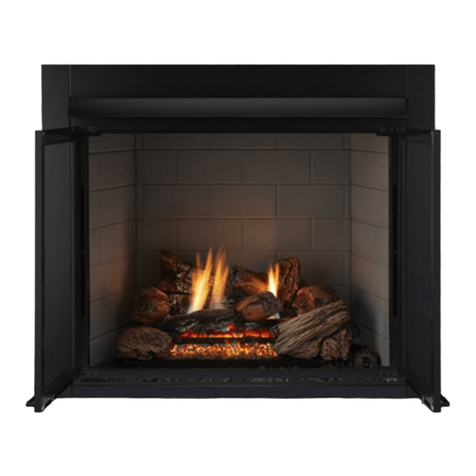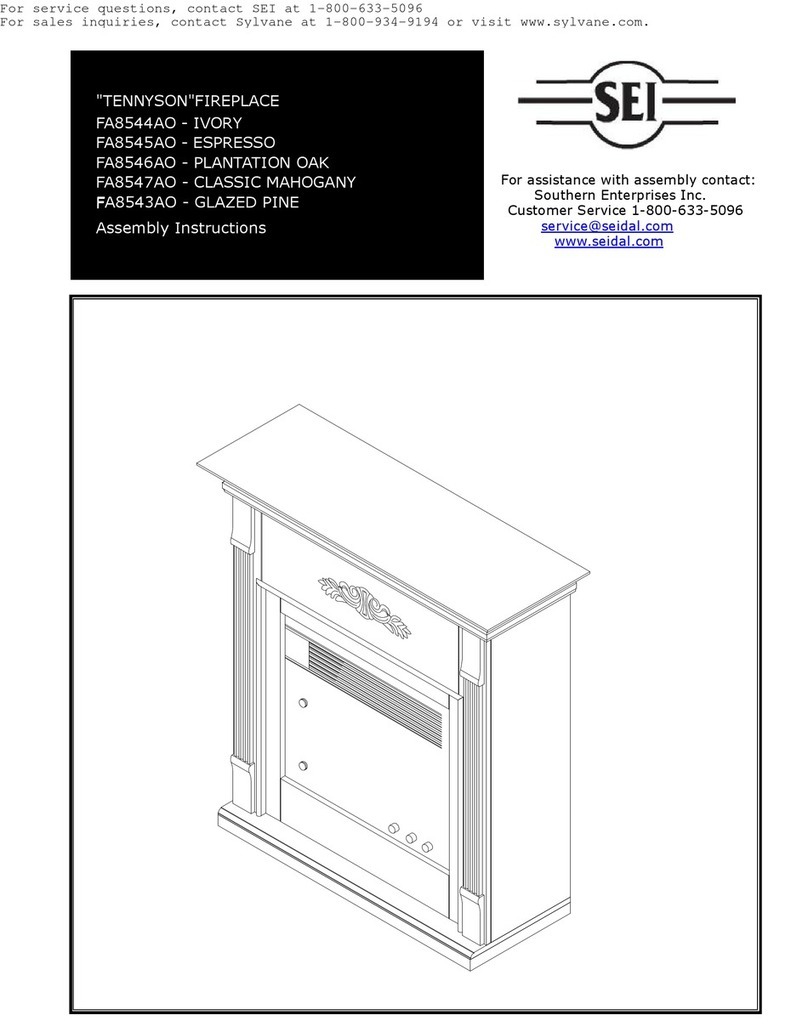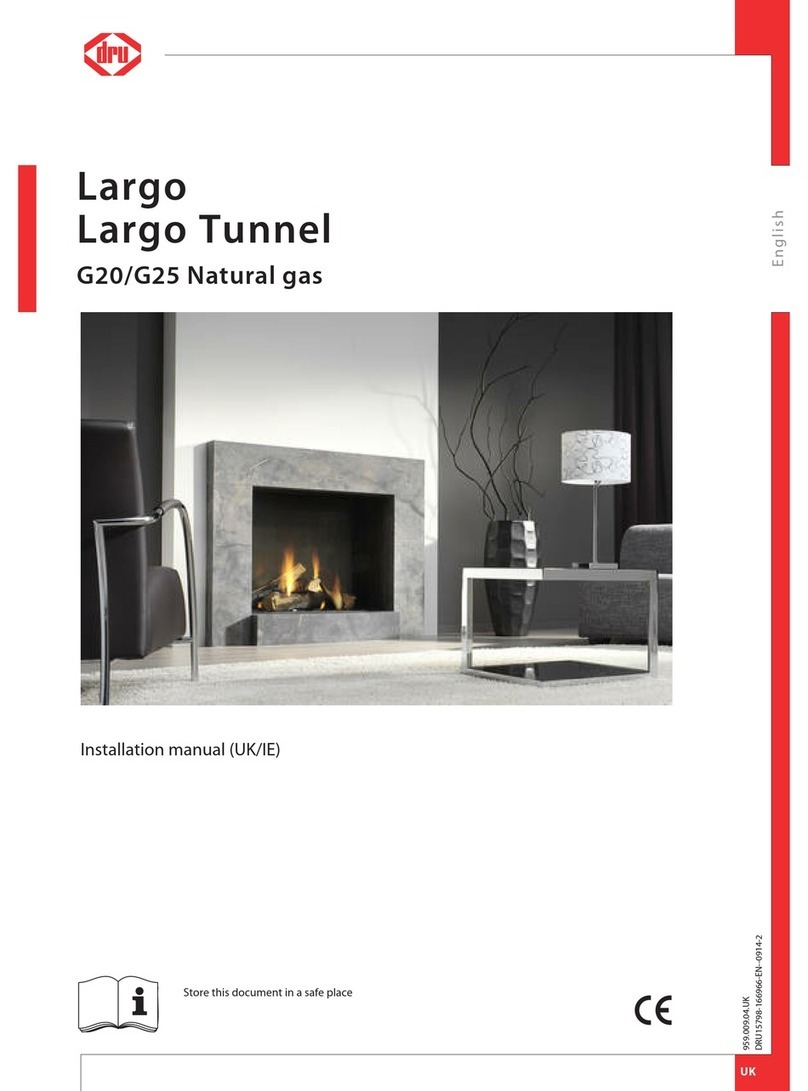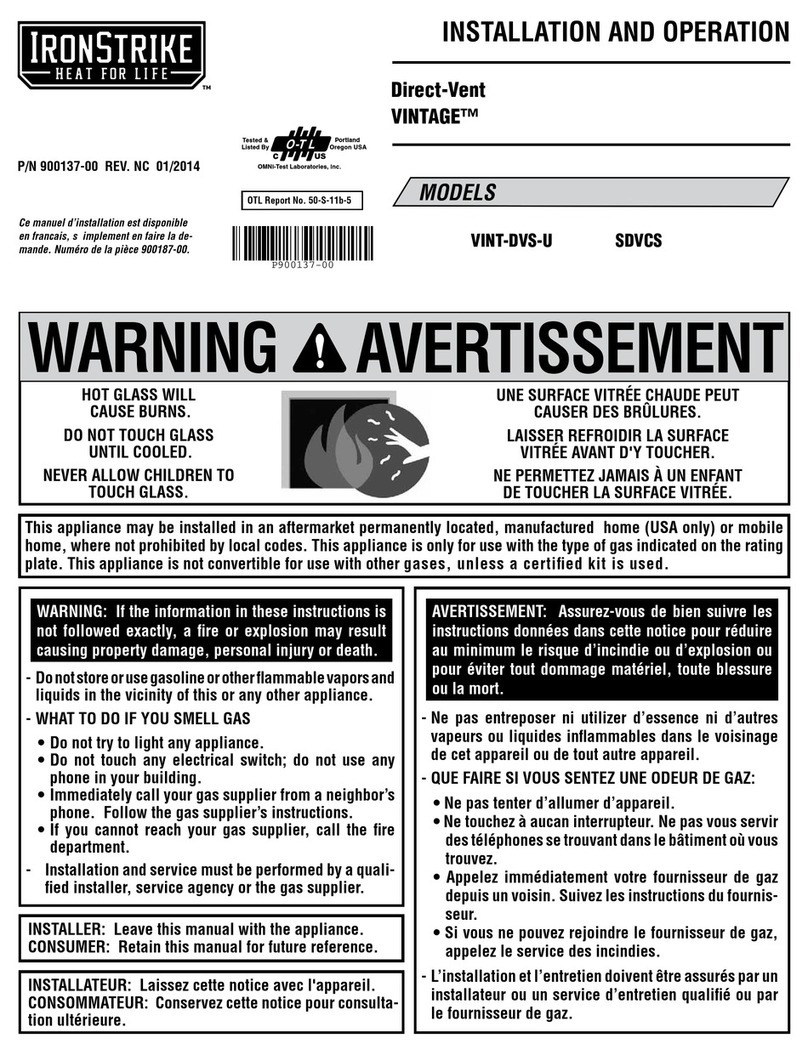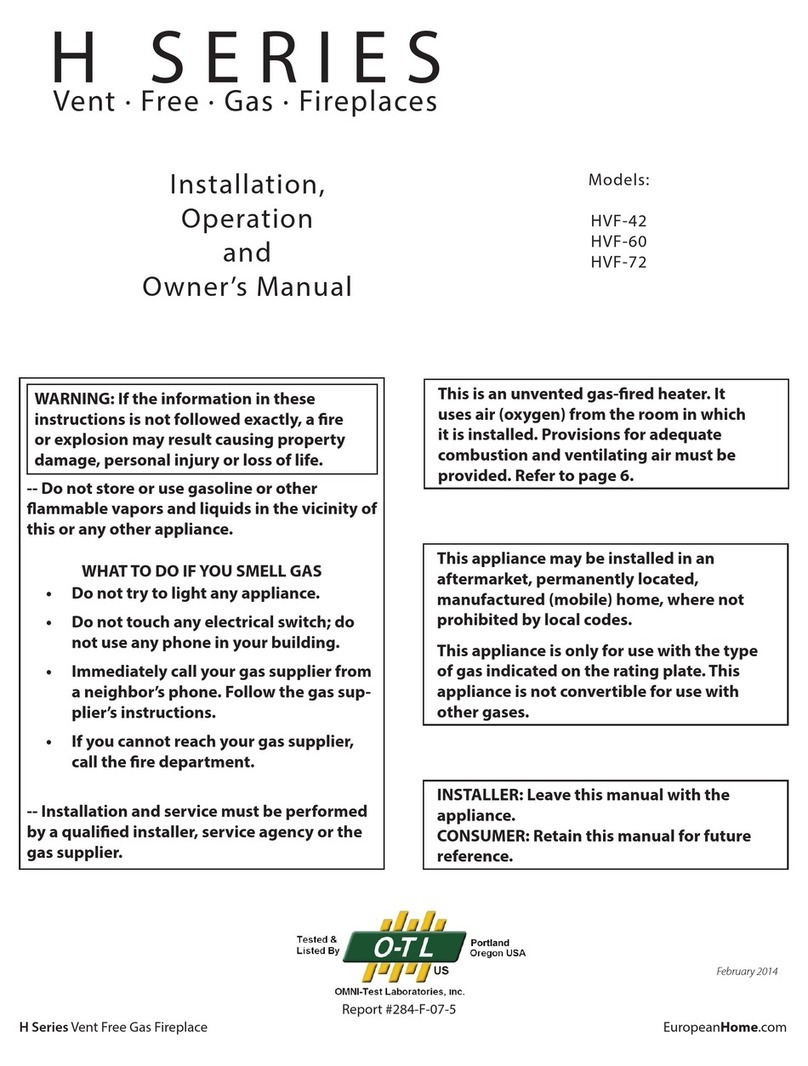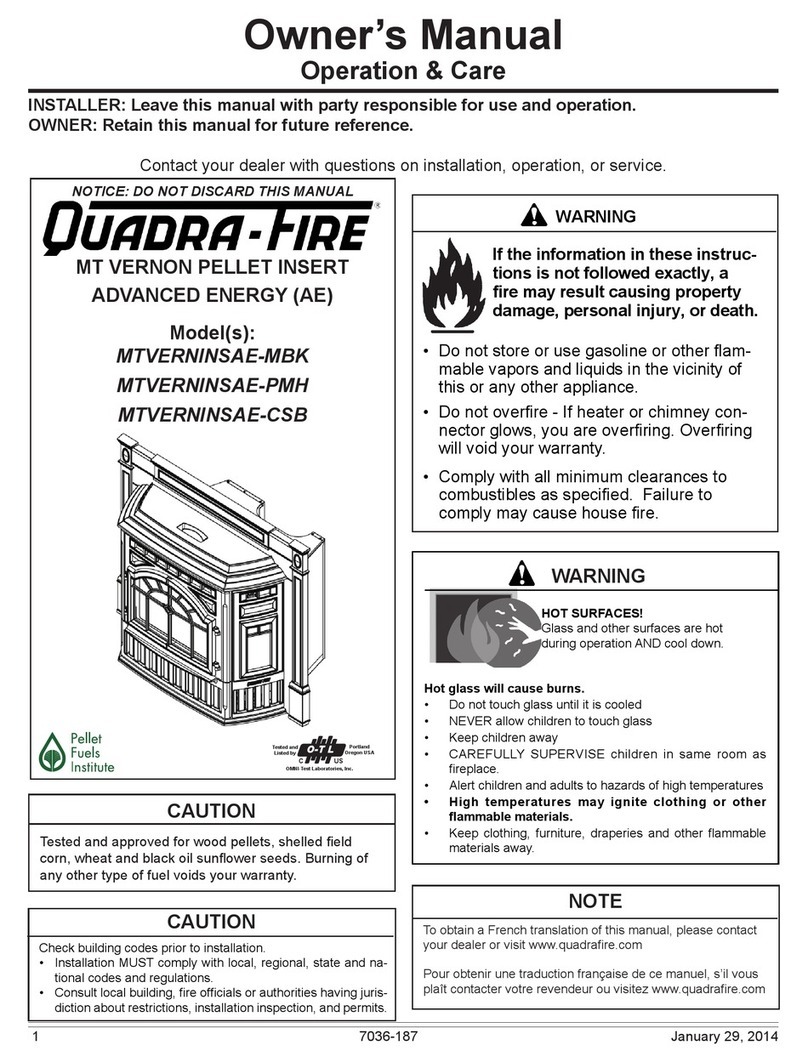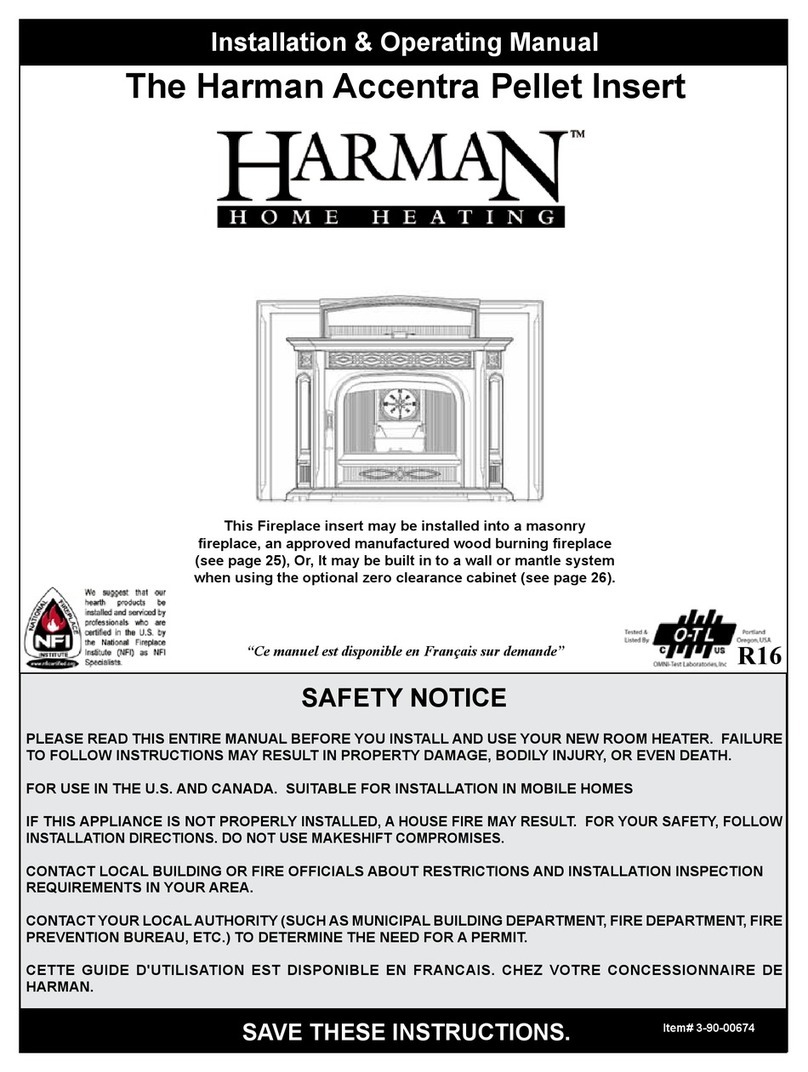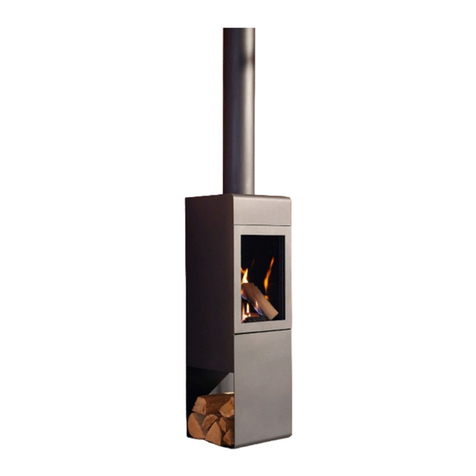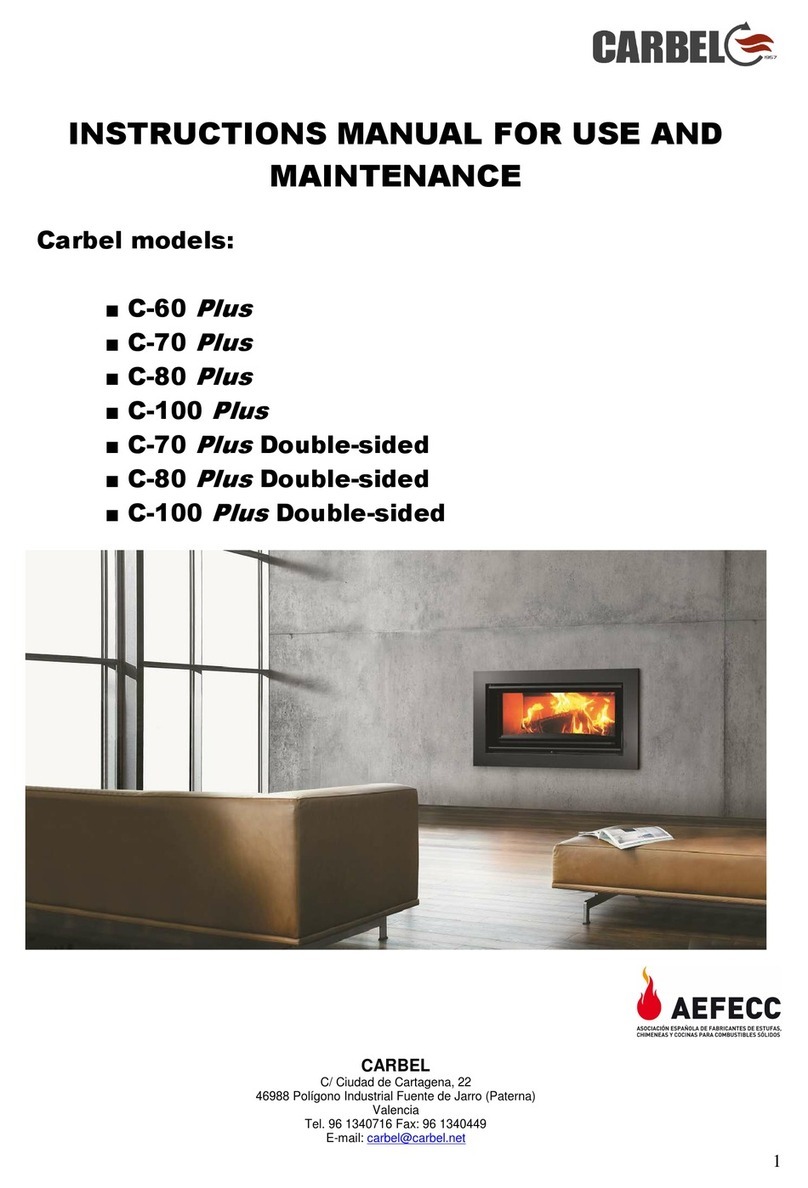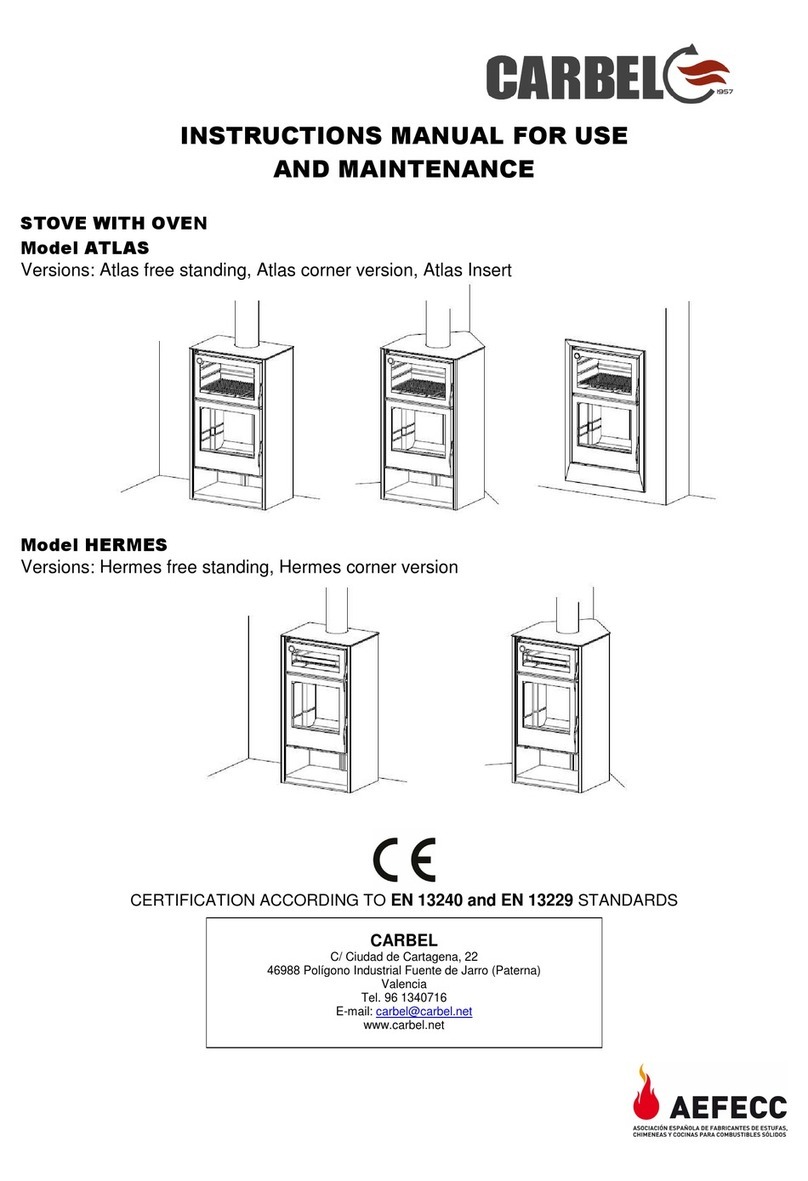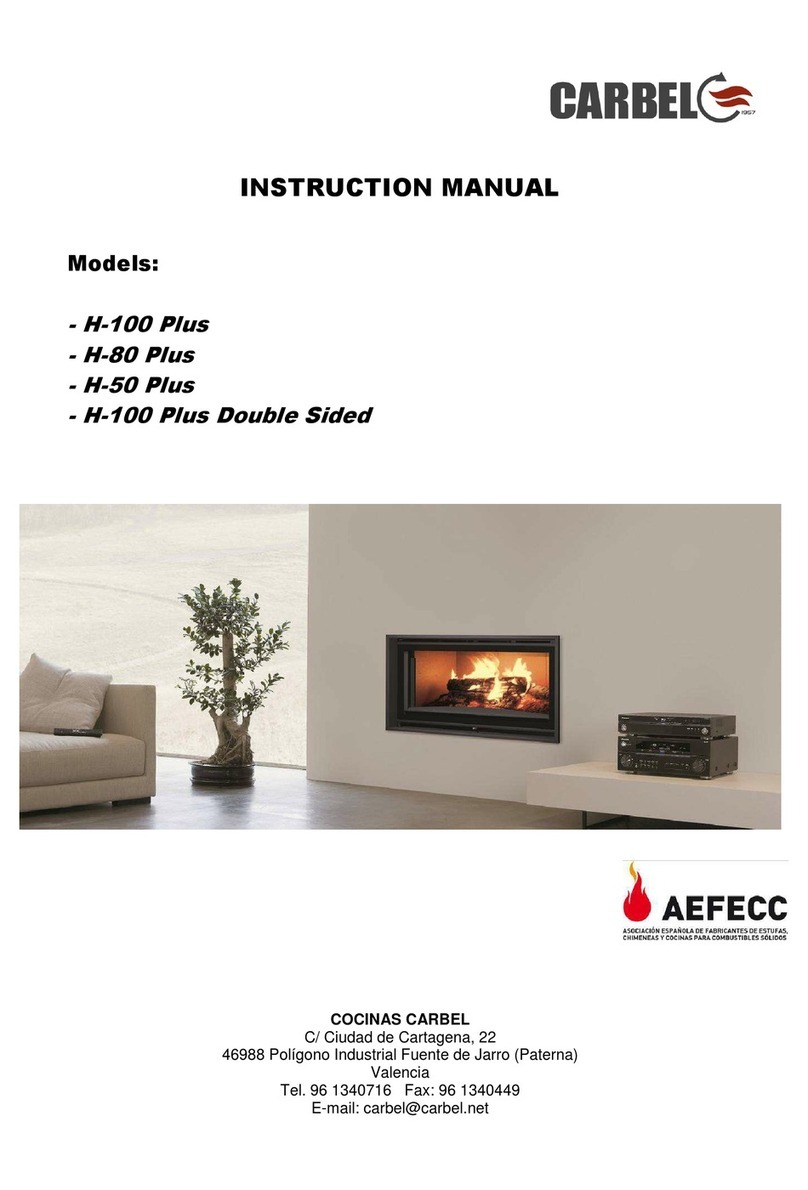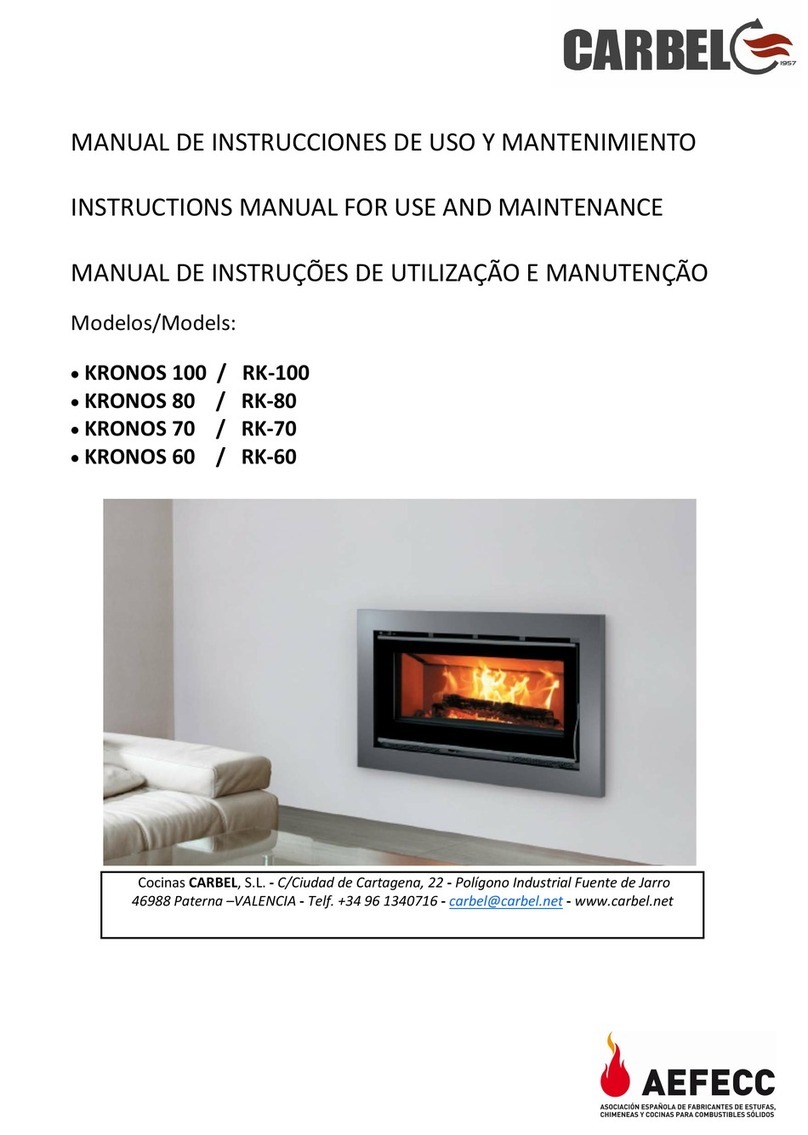
6
3. After a certain period of time, which varies depending on the type of firewood, the maximum temperature
value is reached and the gases emitted from the firewood decrease slowly along with the volume of the
flames.
When the firewood gas emission is complete, the flame goes out and the firewood turns to burning embers.
- The fuel load should have the approximate weight recommended by the manufacturer for each model.
Preferably in one or two pieces.
- Avoid overloading with firewood that is too thin as this can cause poor combustion. The firewood emits an
excessive amount of gas very quickly and the air supply is insufficient. Although there is a large volume of
flames, combustion it is not good and the glass tends to get dirty. There is a danger of reaching excessive
temperatures that threaten the integrity of the woodburner and user safety.
- Select the firewood to achieve the desired type of operation. Thin firewood should be used to get higher
thermal power, use it after lighting the fire for a faster response as you need more heat.
Use larger-size, thick wood for a slower combustion when you have less need for heat or for overnight
maintenance, always preceded by a cycle of more power with thinner firewood, when the appliance
temperature is already high. If necessary, when starting the fire, burn a combination of thin and thick
firewood.
When the woodburner is in operation, the door should always be closed. When you open the door to reload,
do so slowly to avoid the smoke inside the fireplace from blowing out into the room.
Warning.-
In woodburners and inserts, prolonged and continuous use at a
very low rate of combustion or with very wet wood can cause
highly flammable creosote to build up in the flue.
FUEL
Woodburner performance also depends greatly on the fuel used
. The wood must be dry to get more heat. It
will also be easier to regulate heat and keep the woodburner and flue in better condition. Store firewood in a
dry, ventilated place protected from the rain for at least two years.
- You can also use compressed-wood logs, such as briquettes.
- Avoid softwoods, such as pine, because they produce a lot of smoke and soot that dirty the glass.
- Do not use flammable liquids to light the fire always keep them away from the woodburner.
- Do not use the woodburner as an incinerator, never burn plastics, waste, garbage or rubbish.
- Remove the ashes when the woodburner is off and place them in a metal container as there may be
burning embers hidden in the ashes.
Overloading the appliance with firewood decreases
performance, reduces energy efficiency and accelerates the wear
and tear of the appliance.
Do not exceed the maximum load of firewood given at the end of
the manual.
Overloading the appliance voids all the manufacturer
’
s warranties.
